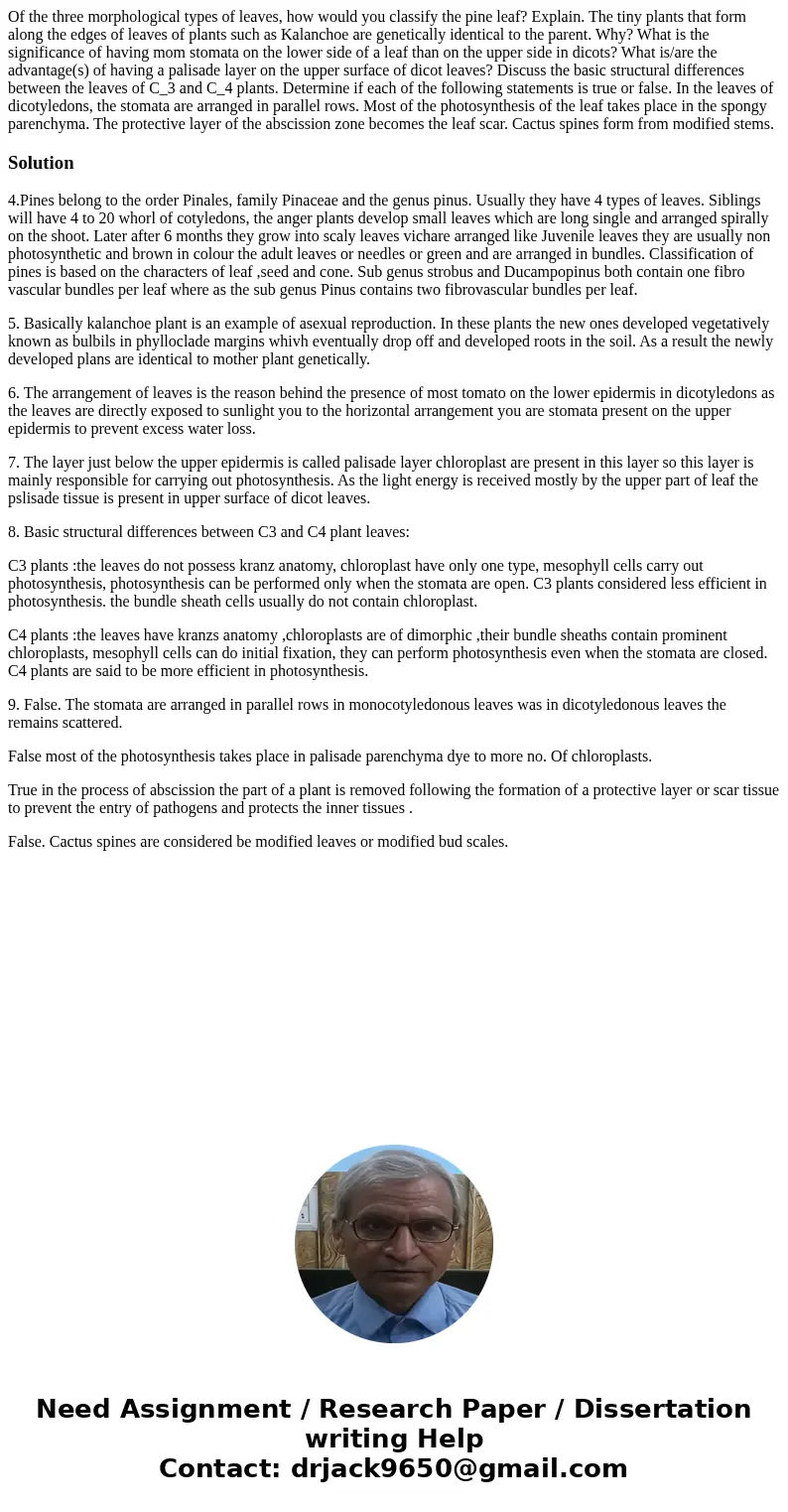Of the three morphological types of leaves how would you cla
Solution
4.Pines belong to the order Pinales, family Pinaceae and the genus pinus. Usually they have 4 types of leaves. Siblings will have 4 to 20 whorl of cotyledons, the anger plants develop small leaves which are long single and arranged spirally on the shoot. Later after 6 months they grow into scaly leaves vichare arranged like Juvenile leaves they are usually non photosynthetic and brown in colour the adult leaves or needles or green and are arranged in bundles. Classification of pines is based on the characters of leaf ,seed and cone. Sub genus strobus and Ducampopinus both contain one fibro vascular bundles per leaf where as the sub genus Pinus contains two fibrovascular bundles per leaf.
5. Basically kalanchoe plant is an example of asexual reproduction. In these plants the new ones developed vegetatively known as bulbils in phylloclade margins whivh eventually drop off and developed roots in the soil. As a result the newly developed plans are identical to mother plant genetically.
6. The arrangement of leaves is the reason behind the presence of most tomato on the lower epidermis in dicotyledons as the leaves are directly exposed to sunlight you to the horizontal arrangement you are stomata present on the upper epidermis to prevent excess water loss.
7. The layer just below the upper epidermis is called palisade layer chloroplast are present in this layer so this layer is mainly responsible for carrying out photosynthesis. As the light energy is received mostly by the upper part of leaf the pslisade tissue is present in upper surface of dicot leaves.
8. Basic structural differences between C3 and C4 plant leaves:
C3 plants :the leaves do not possess kranz anatomy, chloroplast have only one type, mesophyll cells carry out photosynthesis, photosynthesis can be performed only when the stomata are open. C3 plants considered less efficient in photosynthesis. the bundle sheath cells usually do not contain chloroplast.
C4 plants :the leaves have kranzs anatomy ,chloroplasts are of dimorphic ,their bundle sheaths contain prominent chloroplasts, mesophyll cells can do initial fixation, they can perform photosynthesis even when the stomata are closed. C4 plants are said to be more efficient in photosynthesis.
9. False. The stomata are arranged in parallel rows in monocotyledonous leaves was in dicotyledonous leaves the remains scattered.
False most of the photosynthesis takes place in palisade parenchyma dye to more no. Of chloroplasts.
True in the process of abscission the part of a plant is removed following the formation of a protective layer or scar tissue to prevent the entry of pathogens and protects the inner tissues .
False. Cactus spines are considered be modified leaves or modified bud scales.

 Homework Sourse
Homework Sourse